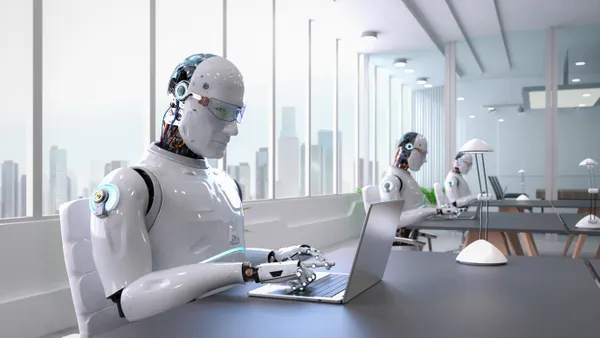Persistent inflation, ballooning prices and other key macroeconomic factors are leading businesses to brace for impact as experts predict the U.S. economy will enter at least a mild downturn by early 2023.
Companies are examining workforce cuts as a way to potentially slim down expenses or restructure businesses prior to a more lean economic period — recent reports found banks such as USAA pared down their banking division, for example, while a slew of big-name technology players such as Amazon, Peloton and social media platform Meta have cut staff or instituted hiring freezes.
Yet while preserving one’s cash flow and minimizing cash burn is critical for companies facing such economic pressures, workforce reduction is often “penny wise and pound foolish,” for firms looking to achieve savings, Matt Armanino, CEO and partner of accounting and consulting firm Armanino LLP said in an interview.
Many companies are eyeing workforce reduction before the coming recession — 80% of hybrid working and fully-in person companies, respectively, stated their intentions to lay off staff during the economic dip according to a study released Thursday by freelance platform Fiverr.
However, the increasingly high costs to hire, train and retain new workers make “reducing the workforce a very, very costly way to try and find savings,” Armanino said.
“Our advice to businesses is to apply a lot of foresight before cutting the workforce,” he said, pointing out that cutting employees now only to hire them back later following this potential recession — which may not run very deep or for very long — could tip up expenses for companies as they labor to rehire and rebuild.
The country’s economy declined for two consecutive quarters, shrinking 0.9% in the second quarter following a 1.9% decline in the first three months of the year, meeting informal definitions of recession. Experts, though predicting a slide into such a period, remain divided on how long a recession will last, theorizing anywhere from the whole of the next year to just a few months.
As well as rising prices and lingering supply chain issues, businesses are also currently facing battles for top talent in a tight labor market, further putting a premium on employee retention. Payrolls climbed 528,000 in July while the unemployment rate slipped down to pre-pandemic levels at 3.5%, belying some fears of recession but likely failing to convince entities such as the Federal Reserve to ease off planned rate hikes to meet their 2% inflation goal.
Retaining top talent is therefore an increasingly high priority for businesses today, with a recent PwC report finding 38% of business executives identified talent acquisition as a top risk — coming in just slightly behind cybersecurity, with 40% of leaders agreeing this was the number one risk faced by their organizations.
Sixty-three percent of executives have either changed or are planning to change processes in order to address labor shortages, the study also found.
Taking steps to invest in technologies such as artificial intelligence (AI) that can take on time-consuming or repetitive processes rather than reducing one’s workforce can help businesses more successfully weather an economic dip. The investment in processes such as digital transformation “often has an immediate effect on labor costs and savings,” Armanino said. Deploying technologies like AI can help to drive cost-savings as well as provide a short-term return on investment for the business, he said.
“Businesses that are turning the spigot off these initiatives because the economy is slowing down are increasingly missing an opportunity, [from] our perspective,” he said.
Achieving a balance between skilled workers as well as investment in key technologies or tools can help firms keep down costs while preserving their cash flow.
“I think the key is, where is it that human capital can be applied for those things that are obviously uniquely human in nature that require judgment, skill and emotion?” Armanino said. “And where is it that there's repetitive processes that can be standardized and potentially automated? That's really the question that businesses are looking at.”












